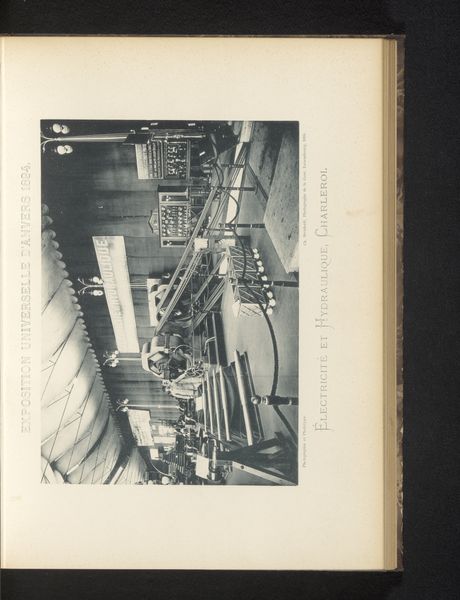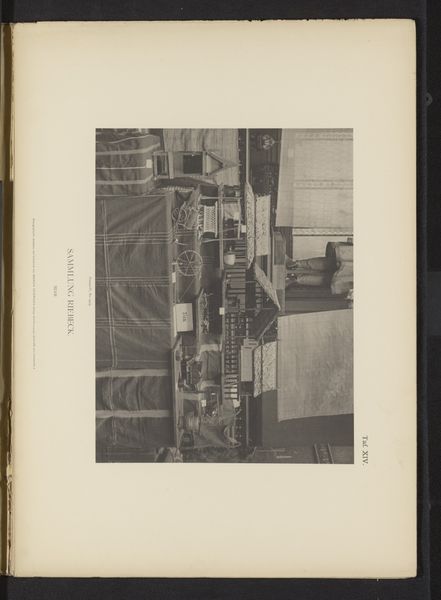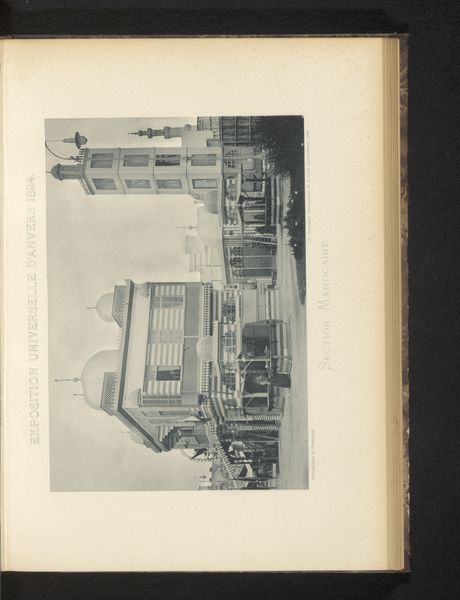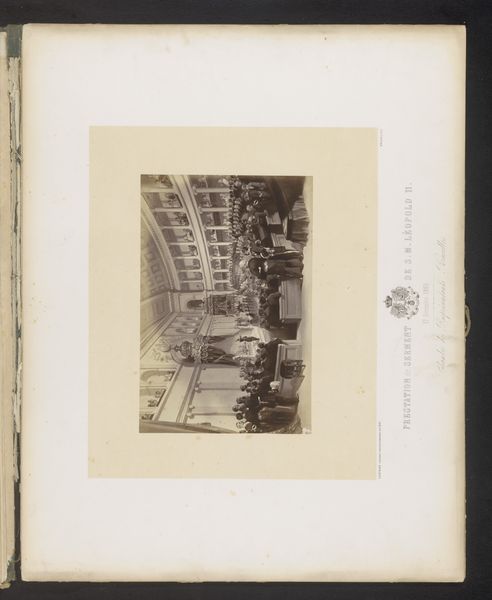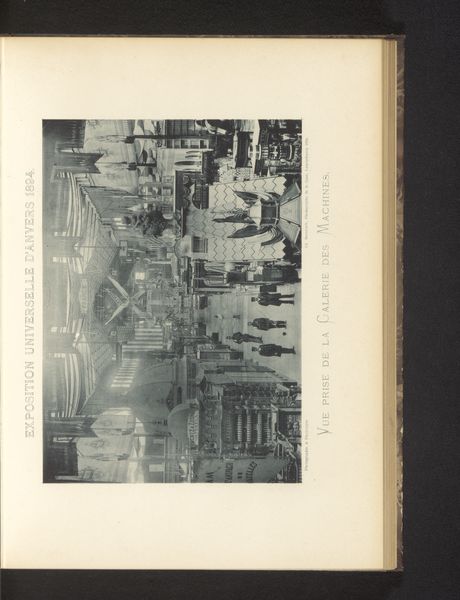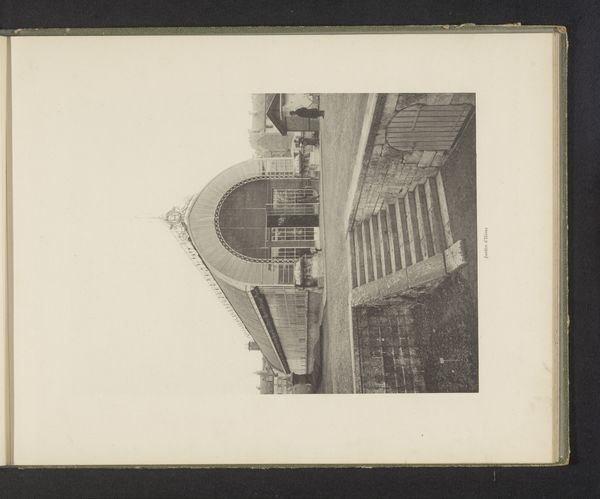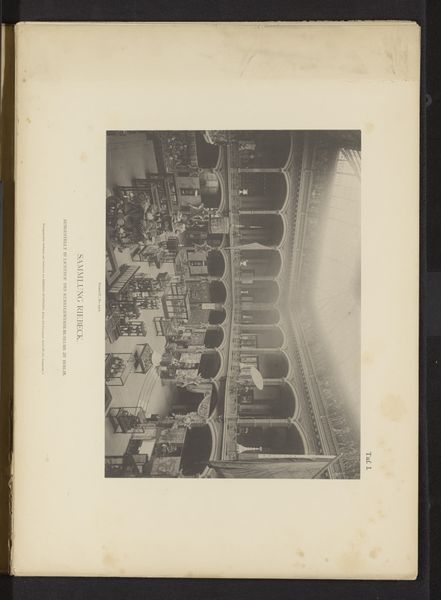
print, photography
# print
#
photography
#
cityscape
#
realism
Dimensions: height 239 mm, width 300 mm
Copyright: Rijks Museum: Open Domain
Curator: We are looking at “Diamantslijperij op de Exposition Nationale van 1880 in Brussel, België,” a photograph from 1880 by Ferdinand Fussen, documenting a diamond cutting workshop at the National Exhibition in Brussels. What’s catching your eye? Curator: The overall impression is of machinery contained, even tamed. You have this enormous workshop floor with all these exposed metal frameworks but all to demonstrate tiny changes in hard matter. The whole picture hinges on scale. Curator: It's fascinating to consider how these large-scale national exhibitions functioned as sites for showcasing technological advancement and colonial wealth, diamond cutting was an industry built upon the exploitation of laborers in colonized lands. Curator: Right. The means of production become part of the spectacle themselves, drawing attention to these very sites of craft. Notice the size of that belt system connecting the machines. It almost overwhelms the workshop itself. Curator: And, more broadly, exhibitions like this reinforced imperial hierarchies. What were the working conditions like for those diamond cutters? Who benefitted most from this display of progress? Those are the kind of questions the image raises for me. Curator: The choice of photography too – highlighting both reproducibility and capturing an objective realism— contributes to a broader understanding of production, with the photo itself also reproduced, circulated, bought, and consumed. The means and ends feed into each other. Curator: Absolutely. Looking at this photograph now, we have the opportunity to critically engage with the complex web of social and economic relationships. Whose stories are included, whose are omitted? That's the core here. Curator: It shows how displays of craftsmanship at sites like these also involved displaying the industrial power which enabled them. What do we take away when all this fades to monochrome, when process and craft flatten to this same even value? Curator: Precisely! And thinking about value…it prompts vital conversations about equitable access, responsible consumption, and the enduring legacy of extraction and industrial production within historical narratives. Curator: Yes, it really pushes me to reflect more on these grand industrial exhibitions – seeing a celebration of materials meeting method and how that also frames exploitation and opportunity.
Comments
No comments
Be the first to comment and join the conversation on the ultimate creative platform.
